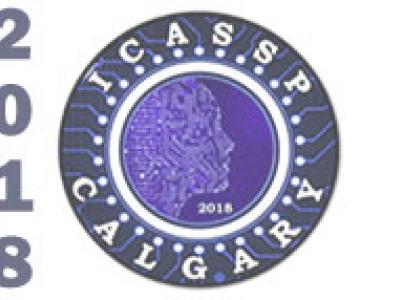
- Read more about END-TO-END LANGUAGE RECOGNITION USING ATTENTION BASED HIERARCHICAL GATED RECURRENT UNIT MODELS
- Log in to post comments
The task of automatic language identification (LID) involving multiple dialects of the same language family on short speech recordings is a challenging problem. This can be further complicated for short-duration audio snippets in the presence of noise sources. In these scenarios, the identity of the language/dialect may be reliably present only in parts of the speech embedded in the temporal sequence.
- Categories:
 38 Views
38 Views
- Read more about EXPLORING RETRAINING-FREE SPEECH RECOGNITION FOR INTRA-SENTENTIAL CODE-SWITCHING
- Log in to post comments
Code Switching refers to the phenomenon of changing languages within a sentence or discourse, and it represents a challenge for conventional automatic speech recognition systems deployed to tackle a single target language. The code switching problem is complicated by the lack of multi-lingual training data needed to build new and ad hoc multi-lingual acoustic and language models. In this work, we present a prototype research code-switching speech recognition system that leverages existing monolingual acoustic and language models, i.e., no ad hoc training is needed.
- Categories:
 92 Views
92 Views
- Read more about Tuplemax Loss for Language Identification
- Log in to post comments
In many scenarios of a language identification task, the user will specify a small set of languages which he/she can speak instead of a large set of all possible languages. We want to model such prior knowledge into the way we train our neural networks, by replacing the commonly used softmax loss function with a novel loss function named tuplemax loss. As a matter of fact, a typical language identification system launched in North America has about 95% users who could speak no more than two languages.
- Categories:
 44 Views
44 Views
- Read more about MULTILINGUAL SPEECH RECOGNITION WITH A SINGLE END-TO-END MODEL
- Log in to post comments
Training a conventional automatic speech recognition (ASR) system to support multiple languages is challenging because the subword unit, lexicon and word inventories are typically language specific. In contrast, sequence-to-sequence models are well suited for multilingual ASR because they encapsulate an acoustic, pronunciation and language model jointly in a single network. In this work we present a single sequence-to-sequence ASR model trained on 9 different Indian languages, which have very little overlap in their
- Categories:
 16 Views
16 Views
- Read more about SEQUENCE-BASED MULTI-LINGUAL LOW RESOURCE SPEECH RECOGNITION
- Log in to post comments
Techniques for multi-lingual and cross-lingual speech recognition can help in low resource scenarios, to bootstrap systems and enable analysis of new languages and domains. End-to-end approaches, in particular sequence-based techniques, are attractive because of their simplicity and elegance. While it is possible to integrate traditional multi-lingual bottleneck feature extractors as front-ends, we show that end-to-end multi-lingual training of sequence models is effective on context independent models trained using Connectionist Temporal Classification (CTC) loss.
- Categories:
 15 Views
15 Views
- Categories:
 16 Views
16 Views
- Read more about A Novel Learnable Dictionary Encoding Layer for End-to-End Language Identification
- Log in to post comments
A novel learnable dictionary encoding layer is proposed in this paper for end-to-end language identification. It is inline with the conventional GMM i-vector approach both theoretically and practically. We imitate the mechanism of traditional GMM training and Supervector encoding procedure on the top of CNN. The proposed layer can accumulate high-order statistics from variable-length input sequence and generate an utterance level fixed-dimensional vector representation.
- Categories:
 25 Views
25 Views
- Read more about Insights into End-to-End Learning Scheme for Language Identification
- Log in to post comments
A novel interpretable end-to-end learning scheme for language identification is proposed. It is in line with the classical GMM i-vector methods both theoretically and practically. In the end-to-end pipeline, a general encoding layer is employed on top of the front-end CNN, so that it can encode the variable-length input sequence into an utterance level vector automatically. After comparing with the state-of-the-art GMM i-vector methods, we give insights into CNN, and reveal its role and effect in the whole pipeline.
- Categories:
 25 Views
25 Views
- Read more about DNN BASED EMBEDDINGS FOR LANGUAGE RECOGNITION
- Log in to post comments
In this work, we present a language identification (LID) system based on embeddings. In our case, an embedding is a fixed-length vector (similar to i-vector) that represents the whole utterance, but unlike i-vector it is designed to contain mostly information relevant to the target task (LID). In order to obtain these embeddings, we train a deep neural network (DNN) with sequence summarization layer to classify languages.
- Categories:
 21 Views
21 Views